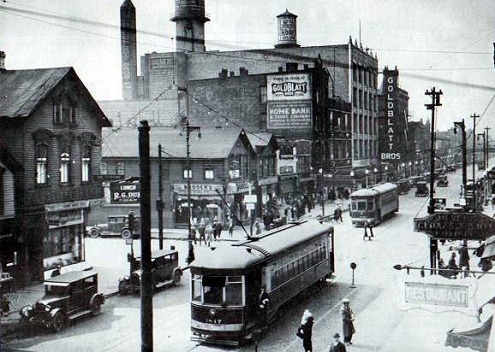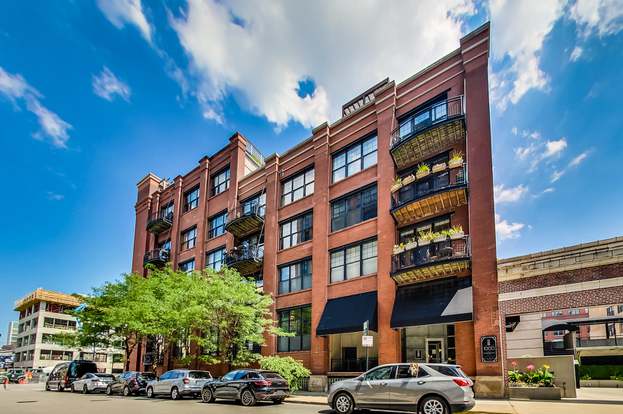The Near West Side of Chicago: A Rich Tapestry of History and Diversity
The Near West Side, one of the 77 community areas of Chicago, is a vibrant neighborhood situated on the West Side of the city. With the Chicago River to its east, the region is conveniently located adjacent to the Loop. The Near West Side has a rich history, marked by significant events such as the devastating Great Chicago Fire of 1871, which started within its boundaries.
The area is also known for its diverse demographics, with a unique blend of peoples from various ethnic backgrounds, contributing to the rich cultural tapestry of the neighborhood. This diversity is reflected in the educational attainment of the residents, with a high percentage of the population holding a high school diploma or higher.
Historical Background
The history of the Near West Side is characterized by waves of immigration which shaped the area in profound ways. From the establishment of the first African American settlement in Chicago in the 1830s to the influx of Irish, German, Czech, and French immigrants, the area has always been a melting pot of cultures.
In the 19th century, the district became easily accessible from the Lake Street business district, attracting wealthy residents who sought to make the West Side an elite refuge from the daily commotion of the growing city. They established Jefferson Park and Union Park as small, safe public resorts, adding to the area’s appeal.
However, the Great Chicago Fire of 1871 brought significant changes to the Near West Side. Over 200,000 people sought refuge in the area, creating overcrowded conditions. The end of the century saw Russian and Polish Jews, along with Italians, replacing the Irish and Germans, with the Italians settling between Polk and Taylor Streets, and the Jews southward to 16th Street. This cultural shift led to the birth of the Maxwell Street Market, the center of the Jewish business community, and Greektown, a Greek settlement.

Institutions and Landmarks
The Near West Side is home to numerous institutions and landmarks that add character to the area. These include the University of Illinois at Chicago (UIC), Chicago-Kent College of Law, and City Colleges’ Malcolm X College. Additionally, the United Center arena, the Illinois Medical District, Union Station, Ogilvie Station, and the Jane Byrne Interchange are also located within its boundaries.
Among its many landmarks, the Near West Side boasts several Designated Chicago Landmarks such as the First Baptist Congregational Church, the Monument of the Haymarket Riot, Hull House, and Union Station.
Neighborhoods within the Near West Side
West Loop
The West Loop, located along the western bank of the Chicago River, includes the districts of Fulton River, Fulton Market, and Greektown. This area has undergone rapid gentrification, with many old manufacturing and warehousing buildings being converted into loft condominiums, restaurants, bars, and art galleries.
Fulton River District and Fulton Market
The Fulton River District makes up the northeast area of the Near West Side, on the Chicago River just west of the Loop. The district is a former manufacturing and current transportation corridor turned mixed-use commercial and residential neighborhood.
Greektown
Greektown is a restaurant and nightlife corridor along Halsted Street between Van Buren and Madison Streets. Despite the decrease in Greek influence as inhabitants moved to Chicago suburbs, Greektown is home to the National Hellenic Museum, the nation’s leading museum dedicated to the significant cultural contributions of Greek people.
Little Italy
The neighborhood between the Illinois Medical District and UIC’s east campus is known as Little Italy. An Italian community developed here in the late nineteenth century. Despite the Italian population being displaced in the 1960s and 70s by the construction of UIC’s east campus, the neighborhood still houses several Italian-American landmarks.
University Village/Maxwell Street
University Village is a neighborhood consisting of residential and retail properties, conveniently located near the University of Illinois at Chicago (UIC) campus, the medical district, and Maxwell Street.
South Water Market
Chicago’s original produce market sat along the south side of the Chicago River, west of what is now Michigan Avenue. This market became known as South Water Market because of its location.
Illinois Medical District
The Illinois Medical District is one of the largest medical districts in the United States, and the largest in the state. It is home to several renowned institutions like John H. Stroger Jr. Hospital of Cook County, University of Illinois Medical Center, and Rush University Medical Center.
Tri-Taylor
The Tri-Taylor neighborhood lies directly west of the Illinois Medical District. The neighborhood is traditionally an extension of the Little Italy neighborhood to its east.
United Center area
The United Center opened its doors in 1994, replacing Chicago Stadium. The United Center is the home arena for the Chicago Bulls and Blackhawks, and also occasionally hosts concerts and other special events.
Politics and Government
The Near West Side is represented in the Chicago City Council primarily by the 27th ward. In the Illinois Senate, the Near West Side is located almost entirely in the 5th Legislative District. The area is part of Illinois’s 7th congressional district, the most Democratically leaning district in the state according to the Cook Partisan Voting Index.
Transportation
Interstates 290 and 90 both run through the Near West Side, making it a major transportation hub for the region. For rapid transit, the area is served by the Blue, Green, and Pink Lines on the Chicago “L”. Union and Ogilvie stations, major terminals for Metra and Amtrak trains, are on the eastern edge of the Near West Side.
Economy
Prominent brands like Orbitz, McDonald’s, and PepsiCo have their headquarters in the Near West Side. This area has also been the site for key economic activities such as wholesale trade businesses and manufacturing.
Education
The Near West Side is home to various educational institutions, including the University of Illinois at Chicago, Chicago-Kent College of Law, and Rush University. Various public schools, managed by Chicago Public Schools (CPS), also serve the community.
Notable People
The Near West Side has been home to notable personalities such as Frank Jeremiah Armstrong, the first African-American graduate of Cornell College, actress and singer Chloe Bennet, Joseph Ferriola, a figure associated with the Chicago Outfit, and David Schwimmer, famous for his role in “Friends”.
The Near West Side is a testament to the rich history and diverse culture of Chicago. Its unique blend of communities, landmarks, and institutions make it an integral part of the city’s vibrant tapestry. With its ongoing development and increasing attraction for middle-class and upper-middle-class residents, the Near West Side continues to be a significant player in the narrative of Chicago’s growth and evolution.


